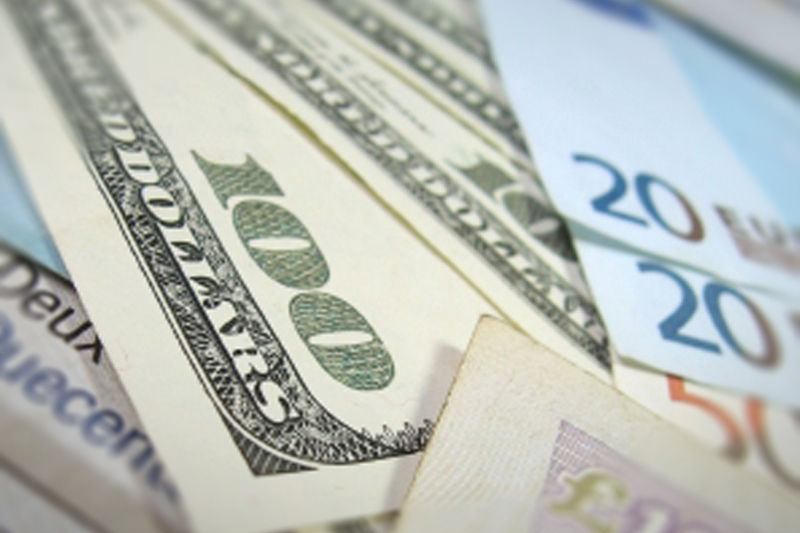Investing.com -- The euro continued its steady climb against the dollar on Friday extending its winning streak to a fourth consecutive session, as the greenback stumbled following another batch of soft economic data.
EUR/USD stood at 1.1446 at Friday's close, up 0.33%, rallying from session-lows of 1.1324 as currency traders locked into gains from earlier this week when the euro soared to a three-month high. The euro ended the week up 2.25% against its U.S. counterpart and has gained roughly 7% over the last month.
While EUR/USD is up nearly 9% after touching down to 12-year lows near 1.04 in mid-March, the euro is still down more than 5.15% against the dollar since the start of the year when it stood at 1.2104.
Consumer confidence, one of the lone bright spot in the U.S. economy in recent weeks, appears to have peaked. On Friday, the University of Michigan reported that its Consumer Sentiment Index plunged to 88.6, far below low consensus estimates of a 93.5 reading. In terms of current conditions, the survey indicated a drop of 7.2% to 99.8, the lowest level since October. Consumer expectations are comparatively bleak, falling 7.3% from the last reading to 81.5, the worst level in five months.
The downbeat survey comes days after the U.S. Census Bureau reported little change in consumer spending throughout the nation. U.S. retail sales remained flat in April below economists' forecasts of a 0.2 gain. Hawkish policy makers at the Federal Reserve had pointed to strong consumer sentiments and seasonally-affected drags in spending as signals of an improving economy. The downbeat data, however, could appease the doves on the Federal Open Market Committee (FOMC) in favor of a delayed interest rate hike.
Last month, the FOMC removed all calendar references to the timing of its first interest rate hike in nearly a decade. While San Francisco Fed president John Williams said earlier this week that a June rate hike still remains on the table, it is becoming increasingly likely that the Fed will that the Fed will wait until September or even December before raising its benchmark Fed Funds Rate above its current level of zero to 0.25%.
At the same time, the University of Michigan indicated that inflation expectations are going up in large part to increases in energy prices. Inflation expectations over the next year increased 0.3% to 2.9%, according to the consumer survey. The Fed would like to see inflation move toward its targeted goal of 2% annually before it increases interest rates.
Investors await the release of next week's Consumer Price Index (CPI) for further indications on the state of the economy. Although the CPI gained 0.2% in March after falling sharply in January, it was still 0.1% lower on a year-over-year basis. Bond markets typically rally when there are increases in the CPI.
Yields on U.S. 10-Year Treasuries plunged nine basis points to 2.148% on Friday, while yields on 30-Year Treasuries plummeted 11 basis points to 2.935%. Earlier in the week, 10-year Treasuries soared to a six-month high at 2.36% and the 30-year moved above 3% for the first time this year amid a rout in the global bond markets.
In Europe, yields on German 10-Year bunds fell eight basis points to 0.62%. Yields on Italian and Spanish 10-Year bonds, meanwhile, each fell more than eight basis points to 1.76% and 1.72% respectively. On Tuesday, a massive sell-off in the European bond markets pushed the yields on the sovereign debt above 1.8%. Bond prices fall when yields increase. Over the last month, yields on 10-year German, Spanish and Italian bonds are all up by more than 45 basis points.
The U.S. Dollar Index, which measures the strength of the greenback versus a basket of six other major currencies, remained weak falling to a four-month low at 93.17.
